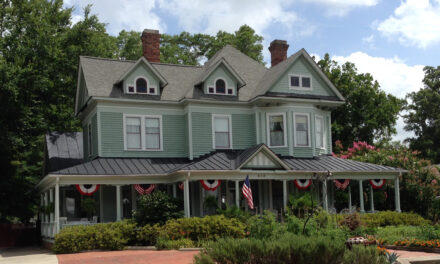Despite torrential rains during the rush hour, there was a good turnout for the North Carolina Symphony‘s first “Meet the Artists” program of the season, held in the lobby of Meymandi Concert Hall. WUNC-FM’s Catherine Brand served as host for NC Symphony Music Director Grant Llewellyn and pianist Andrew von Oeyen, who was substituting for Pascal Rogé on short notice. Rogé, beloved by Triangle audiences for donating his services during the orchestra’s worst recession period, had been scheduled to perform Poulenc’s rarely-heard Piano Concerto and Mozart’s Concert-Rondo, K.386, but hospitalization intervened. Oeyen chose to perform Ravel’s Concerto and two solo Preludes by Debussy. The pianist and the conductor discussed the challenges of the concerto for both soloist and orchestra and aspects of a musical career.
Nothing hones an orchestra’s ensemble skills like a steady diet of the works of Mozart and Haydn. Llewellyn has made welcome efforts to remedy this deficiency of a previous music director’s regime. The conductor’s overall theme for this concert was the French connection among all the pieces. Franz Joseph Haydn (1732-1809) composed six symphonies (Nos. 82-87) for the Loge Olympique in Paris, and the composer reveled in having access to a far larger orchestra than he had at Prince Nikolaus Esterházy’s palaces; the latter’s son, Antal, had dismissed Haydn and his musicians, freeing the composer to “freelance.” The Symphony No. 83 in G Minor (“La Poule”) is in the standard four movements. There is no slow introduction, and the minor key gives the opening movement a restless quality. The nickname “The Hen” comes from the hesitant or “clucking” quality of the second theme of the first movement. The balance of elements in the following “andante” makes it one of the composer’s best. The well-behaved “Menuet” contains lively rhythmic interplay. The fast-paced finale is a hearty affair suggestive of a hunt. Llewellyn led a beautifully-judged and stylish interpretation. The orchestra sections were perfectly balanced, and attacks and individual solos were precise and spirited. Articulation in the string sections was wonderfully clear and the tone was warm and well-blended. The woodwinds were also excellent.
The well-known Piano Concerto in G of Maurice Ravel (1875-1937) is the more approachable of the composer’s two concertos. During the “Meet the Artists,” Oeyen had stressed the importance of exact coordination between the challenging keyboard part and the numerous orchestral solos. Llewellyn said the concerto contains seven or eight of the most difficult orchestral solos in the repertory, parts are on many players’ auditions. Oeyen, Llewellyn, and the orchestra turned in a vivid, white-hot performance with razor-sharp attacks and a whirlwind impetus in the fast movements. Time seemed suspended in the gorgeous low movement; here, the superbly-spun English horn solo of Michael Schultz was just one of the most prominent solos heard throughout the concert. Sassy brass and agile woodwinds come to mind. The trumpet solo was just one highlight of remarkable ensemble that held together in the mad dash of the finale.
After intermission, Oeyen played two strongly-contrasted selections from Claude Debussy’s Préludes for Piano, Book 1. The light and playful “Les Collines d’Anacapri” (“Hills Behind Anacapri”) was followed by the more famous, dark, and ominous “La Cathédral Engloutie.” Oeyen displayed a wide palette of color and dynamics. Before playing the pieces, the pianist alluded to what he called the “Fourth Dimension,” alluding to the quality of the sound considered to have been produced in the Debussy’s Préludes when they were new.
It is tragic Georges Bizet (1838-75) died so young! He was only seventeen when he composed his miraculous Symphony No. 1 in C (1855). Gounod’s Symphony in D served as a model for Bizet. It is in the standard four movements. The outstanding feature is the remarkable second movement featuring a languid, sensual theme suggestive of some tropical region – followed by one of the most beautiful fugues in the literature. Rarely has scholarship worn such gay apparel! Ensemble, phrasing, and tempos were superb throughout the performance. Llewellyn and the orchestra almost made me forget the classic Beecham or Munch recordings. The spell-binding oboe solo was conjured up by Melanie Wilsden. I loved the touch of French vibrato in the brass section.
Note: This program will be repeated in Meymandi Concert Hall on 10/1 and in UNC’s Memorial Hall on 10/2. For details, see the sidebar.











